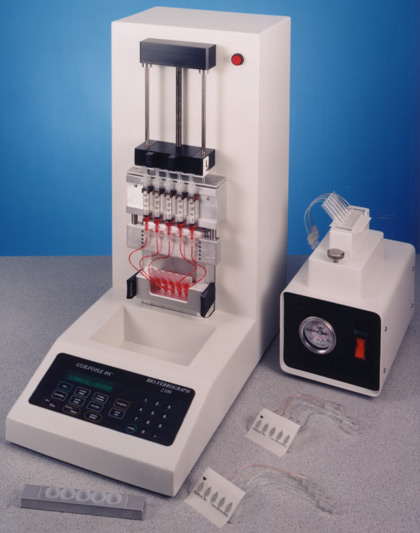

The Bio-Ferrograph 2100 captures cells on a microscope slide for analysis. A sample containing the cells is incubated with an appropriate magnetizing agent. The sample is then passed along a glass substrate through a specially designed high-gradient magnetic field. Exposing the magnetically labeled cells to the magnetic field draws the cells to the surface of a substrate where they are captured. The sample fluid passes through the device and is collected in a syringe. Captured cells have excellent morphology, and are suitable for either cultivating or analysis.
Cells captured for analysis can be stained on the instrument where they are held in place magnetically during staining. This reduces the loss of rare cells that can
occur in conventional techniques, allowing detection of rarer cells than now possible. Captured cells that have not been fixed can be cultivated after washing from the substrate into a suitable growth medium.
The technology embedded in the
Bio-Ferrograph 2100 renders many conventional gradient separation, lysing and centrifuging/washing steps superfluous while providing a selection sensitivity which exceeds other cell selection techniques.
Users of the
Bio-Ferrograph 2100 comment on its ease of use. Operator training consists of a short demonstration and reviewing the operating manual. Sample preparation is simple, with few of the complex steps involved with other systems.
The Bio-Ferrograph 2100 is for research use only.
Covered under US patents # 5,714,059, 6,156,208 and 6,303,030